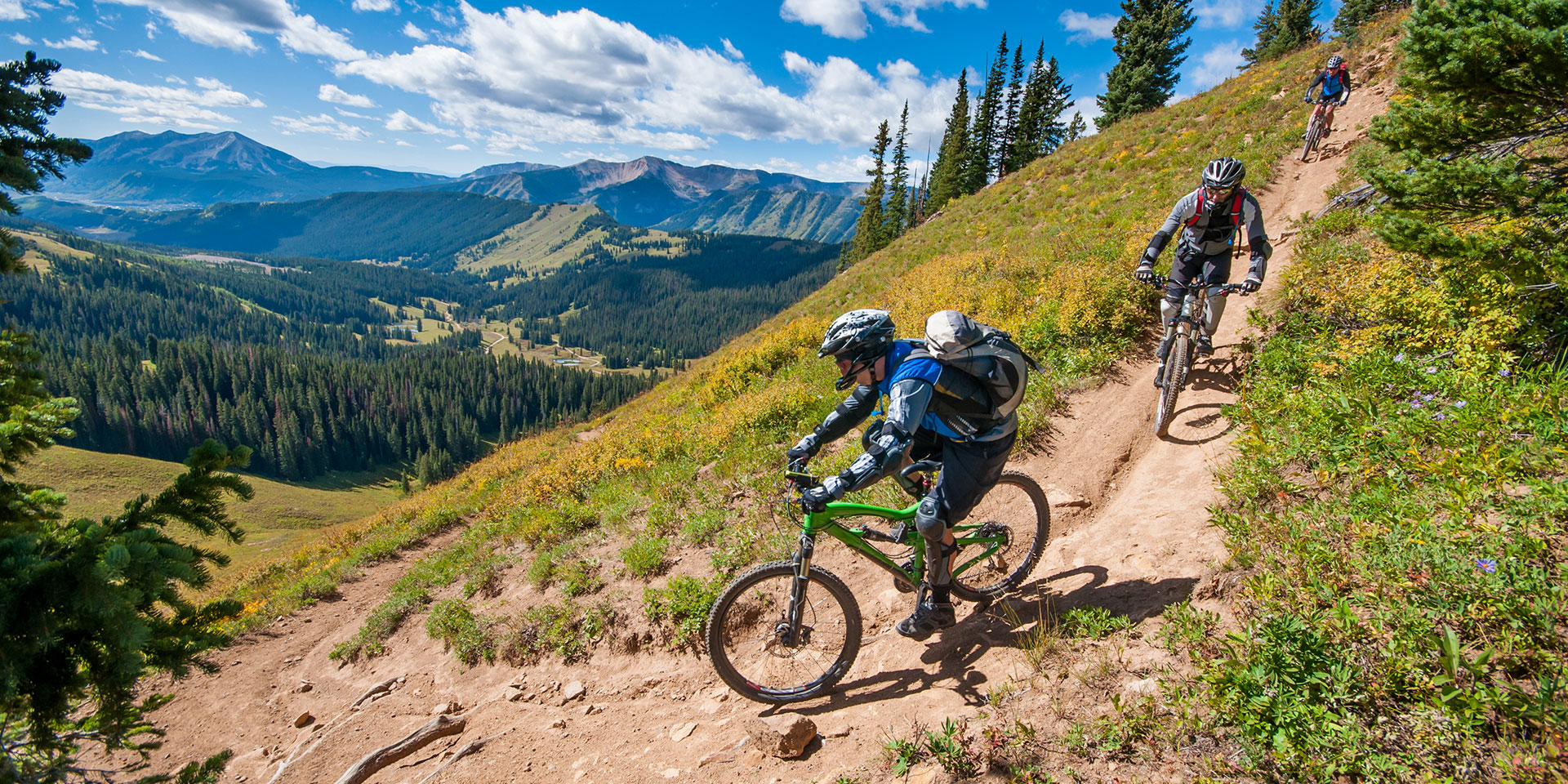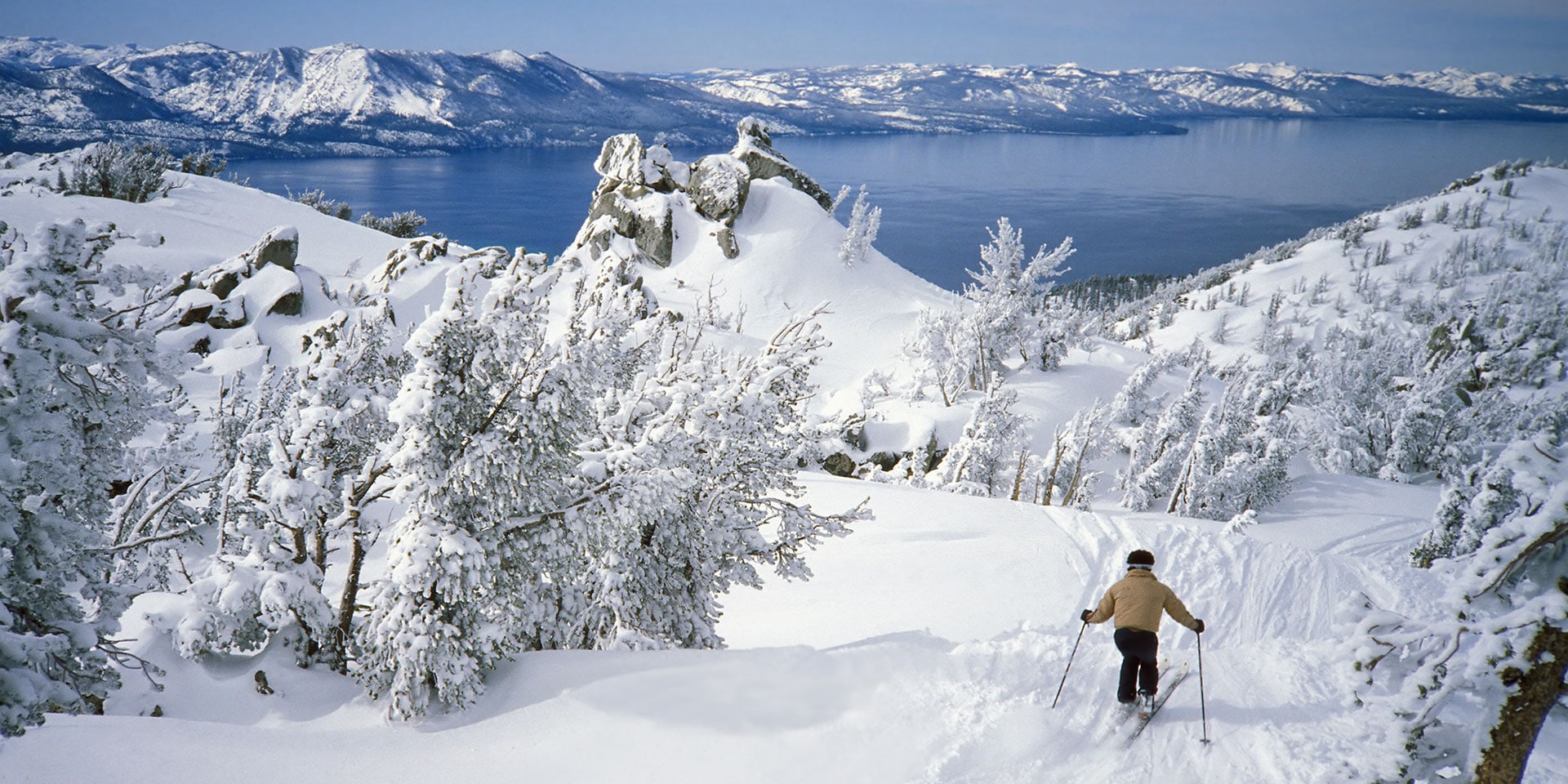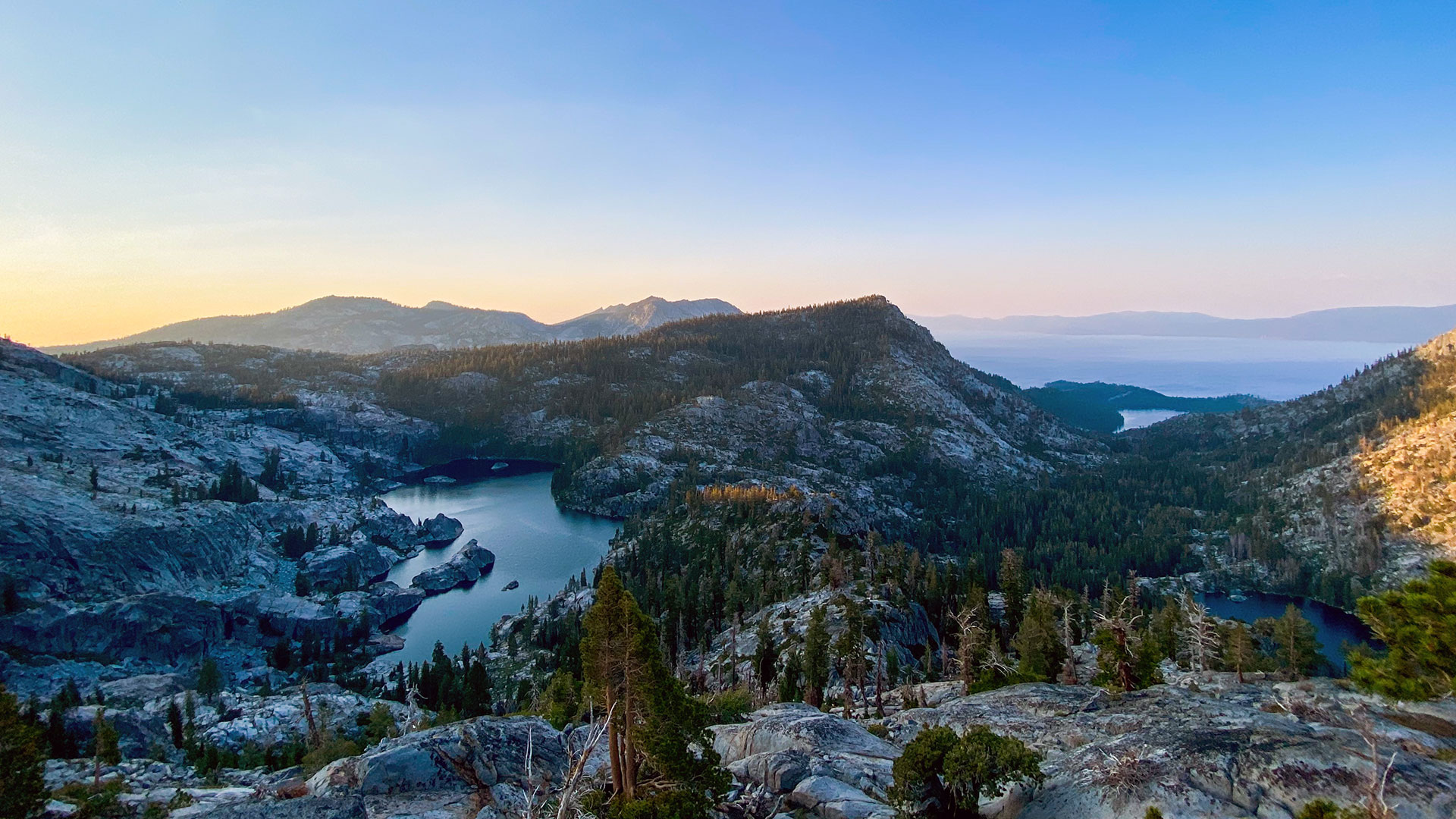While many mountain towns are known for their world-class skiing, the truth is these places are hot spots for year-round recreation. From hiking and mountain biking in the summer to leaf peeping in the fall, there is plenty to do, no matter when you visit. Here are some of our favorite activities in a few of the best mountain regions in the West.
As always, check for travel restrictions and closures before planning your trip.
Vail Valley, Colorado
Vail Valley is a region that consists of several towns along I-70 from Vail to Gypsum and also Minturn and Red Cliff off Highway 24. In the winter, choose from resorts in Vail and Beaver Creek for some of the best skiing and snowboarding in the country.
If cross-country skiing is more your speed, the Vail Nordic Center offers 10 miles of groomed classic and skate track and six miles of beautiful trails for snowshoeing. There are also eight miles of fat bike trails if you prefer to explore on two wheels. When the snow melts, the Vail Nordic Center transforms into the Vail Golf Club.

McCoy Park in Beaver Creek (accessed via the Strawberry Park Lift) offers 20 miles of both groomed and ungroomed trails with panoramic views of three different mountain ranges. Eagle Ranch Golf Course has approximately six miles of trails open for traditional and skate skiing, fat biking or snowshoeing.
Take the resort lifts in the summer to practice your downhill mountain biking skills or hit the Haymaker Trail in Eagle for an easily accessible route appropriate for all ability levels. The Flat Tops Wilderness is a great spot to explore and pitch a tent for the night. One of the best places for ATVing is Camp Hale, south of Red Cliff, where the 10th Mountain Army Division once trained during World War II.
If you’re hoping to see aspens bursting into color in the fall, they’re usually the best in late September/early October. Take a walk on the bike path heading out of Vail Village or take a ride up Gondola 1 to see how Golden Peak got its name. The hike to Piney Lake has views of the Gore Range and tons of aspens, too.
Aspen, Colorado
Aspen Snowmass is home to four different mountains with hundreds of skiing and snowboarding trails for all levels, attracting powderhounds from around the country. The Aspen Snowmass Nordic Trail System includes 56 miles for cross-county and snowshoe enthusiasts.
In the summer, the Roaring Fork Valley is a prime hiking spot (if you’re looking for a challenge with a sweet payoff, head up to Conundrum Hot Springs), while the Roaring Fork River is popular for whitewater rafting and casting a line for brown, cutthroat and rainbow trout. Ride the Silver Queen Gondola to the top of Aspen Mountain and take a yoga class at 11,000 feet or play a round of disc golf on one of the highest official courses in the world.
Cathedral and American lakes are great for seeing wildflowers (the second half of July is the best time to go), while the best place for fall foliage is, hands-down, Maroon Bells, one of the most photographed spots in the state of Colorado.
Deer Valley, Utah
Situated in the Wasatch Mountains in Park City, Utah, Deer Valley gets an annual average of 300 inches of snow across its six mountains. Jumping on a snowmobile is the fastest way to get breathtaking views of the peaks, and don’t miss the evening snowshoe tours that wrap up with gooey s’mores next to a crackling fire.
As in many other mountain towns, the lifts are still operational in the summer, making it easy to take in the views or access a variety of hiking trails. There are about 70 miles of mountain biking trails in Deer Valley from the Silver Lake Express, Sterling Express or Ruby Express at Empire Canyon chairlifts.
Pebble Beach has little wind and no boats or waves, making it perfect for stand-up paddleboarding. The Provo and Weber rivers are blue-ribbon trout streams that are among the best in the country.
Guardsman Pass is impressive any time of year, whether you’re looking for wildflowers, wildlife or fall colors.
Lake Tahoe, Nevada/California

Lake Tahoe offers every winter activity you could imagine: skiing, snowboarding, cross-country skiing, snowshoeing, snowmobiling, sledding and ice skating. There are dozens of resorts and tons of backcountry trails around the lake.
For a fun summer adventure, choose a section of the 165-mile Tahoe Rim Trail for a weekend backpacking trip or bring your bike for a ride. The South Shore Bike Path is an easy, paved option for a family ride. Keep in mind that parts of the trail are closed to mountain bikes, so check the website before you head out.
For a real challenge, trek up Mount Tallac for sweeping views of the blue waters below or see the rushing waters of the Upper Eagle Falls (start at the Eagle Falls picnic area) or Lower Eagle Falls (start at the Emerald Bay/Vikingsholm State Park lot).
Zephyr Cove on the east side of the lake is a quiet spot that is beautiful in the fall.
Mammoth, California
Mammoth Mountain is a popular place for a weekend getaway for Southern Californians and has everything from snowmobile adventures and snowcat tours to skiing, snowboarding and tubing. You can ski well into the spring here, but when the snow is gone, the Mammoth Lakes area has plenty of rock climbing and lots of hiking and biking.
Explore the mountain biking trails in Inyo National Forest or tackle the lung-busting Minaret Road with a few locals. Inyo National Forest also has hundreds of miles of unpaved roads for ATVs, motorcycles or SUVs. Owens River-Hot Creek Road, Lookout Loop or Deadman Creek Trail will take you past high mountain lakes and giant boulders and through timber forests.
Spring is the best time to see wildflowers in the Eastern Sierra, while the 2.25-mile Heart Lake Trail from the Coldwater Campground Trailhead is an easy walk on which to see an array of fall colors.
The number of high alpine lakes, reservoirs, streams and creeks makes Mammoth Lakes one of the best fly-fishing spots in the world. Try Twin Lakes, Lake Mamie, Lake George or Lake Mary — all are stocked with trout and can be fished from the shore, a float tube or by boat.




